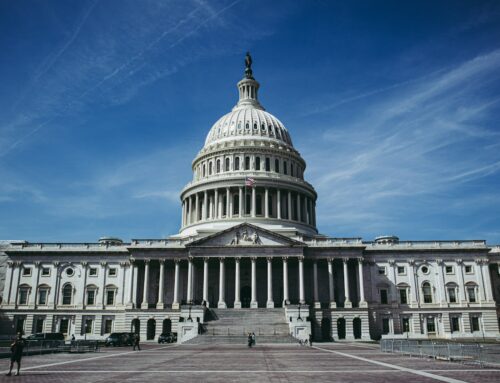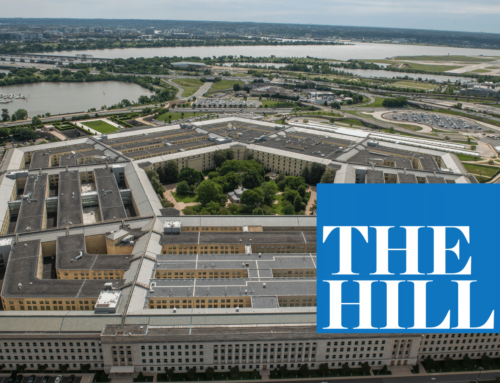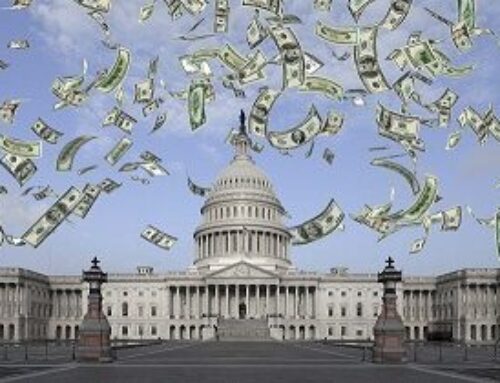“Keith Ashdown was a few beers into a night at the Hawk ’n’ Dove,” wrote Tory Newmyer in the Capitol Hill newspaper Roll Call, “when he came up with the phrase that sparked a national debate over Congressional spending.” Reaching for some way to get people worked up about “earmarks” directing taxes collected by the federal government into obscure local construction projects, the lobbyist for the unassailably named Taxpayers for Common Sense was struck by what he recalled was “a moment of sheer focus.”
He came up with a moniker for a proposed costly bridge to a sparsely populated island in Alaska. At first, no reaction; but three years later, the atmosphere became charged with scandals of political influence-peddling, and The Washington Post reported that “the Bridge to Nowhere became a national symbol of porkmania.”
Ashdown’s Bridge to Nowhere was the phrase that launched a thousand editorials. On the left, Salon noted with scorn that “Alaska’s Gravina Island (population less than 50) will soon be connected to the megalopolis of Ketchikan (pop. 8,000) by a bridge nearly as long as the Golden Gate.” On the right, the Heritage Foundation denounced the planned span to the Ketchikan International Airport as “an object of national ridicule and a symbol of fiscal irresponsibility.”
Did Ashdown’s “sheer focus” lead to a shiny coinage? No; a bridge to nowhere was not only the title of a 1986 movie about kids finding a mysterious hermit but was also in minor headlines in The New York Times in 1981 and 2000. It is the unofficial name of the concrete-and-steel span connecting Middle and Lower Hooper Island in Chesapeake Bay, Md. In a 1960 feature in The Pittsburgh Post-Gazette, Mel Seidenberg wrote of the Fort Duquesne Bridge that “calling it a ‘bridge to nowhere’ may be cutting the truth a bit short,” since drivers were likely to wind up “on some obscure back street of the lower North Side.” Chris Potter of the Pittsburgh City Paper reports today that “the bridge certainly gets used a lot. Steelers fans use it on game days; Heinz Field is nearby.”
“Opponents of vital infrastructure projects have used this term to describe other bridges,” the press aide to Senator Ted Stevens of Alaska informs me. These include Louisiana’s “sunshine bridge” across the Mississippi, originally hooted at as the bridge to nowhere, as well as the Astoria-Megler Bridge over the Columbia River in Oregon, which — like the proposed Gravina Island span — replaced a ferryboat and is now known as “the Bridge to the World.”
The feisty Stevens, a longtime Republican leader and stalwart on mental-health appropriations, threatened to quit the Senate if his state was stripped of aid to this and another bridge to spur development. A compromise was reached to send the money to Alaska for local decision making, but — as testimony to an apt trope’s power to marshal bipartisan media ridicule — without earmarks directing where it must be spent.
I can empathize with the lobbyist Ashdown in the face of all the antedatings of his “coinage.” Only last month, in a fit of lexical triumphalism, I gleefully claimed to have minted e-maelstrom to mean “a storm of e-mails” — only to be brought low by the Gotcha! Gang’s pajama-top patrol citing five previous usages and going nyah-nyah.
But bridge to nowhere will for years be a rallying cry in the campaign against political patronage derided as “pork” (from the pre-Civil War practice of distributing salt pork in large barrels to slaves). It is comparable to the symbol of the $600 toilet seat in budget-cutters’ periodic denunciations of government “waste, fraud and abuse.”
That symbol of porous procurement was the 1985 version of a bridge to nowhere. Lockheed Corporation had charged the Defense Department $34,000 for 54 corrosion-resistant plastic covers that fit over toilet seats. At a Senate hearing, Defense Secretary Caspar Weinberger was boasting of discovering overpayments on claw hammers, when Maine’s Senator William Cohen (who later headed Clinton’s Pentagon) interrupted with “I’m fascinated to hear all this, but I’m told there’s now a problem with a $600 toilet seat.” To the thunderstruck witness, Cohen deadpanned, “It gives new meaning to the word ‘throne.’ ”
On Little Web Feet
Every time I write the word website, some antediluvian (that’s “before the Flood”) editor changes it to Web site. How come? “Our style is Web site,” says Craig Whitney, standards editor at The Times. “There is no clamor for change that I am aware of.”
My appeal to the Chicago Manual of Style gets no support: “A lot of people have come to prefer website,” says a robot named FAQ. “But formal usage still calls for Web site, in recognition of the initiatives of the World Wide Web Consortium.” The A.P. Stylebook’s Norm Goldstein says: “We have decided to stay with Web site, two words, for now. We decided early on that Web site was a component of the World Wide Web, not a compound noun based on it (as, say, webcam.)”
Why must we conform our usage decisions to the diktats of the World Wide Web’s global consortiocrats? Must we also write worldwide as World Wide? Or split homesite into home site? Besides, I find it quicker to type (O.K., key in) website than Web site.
Send your clamor for change to me at the e-mail address at the left, and I’ll pass it on to Whitney. Lazy iconoclasts will win in the end.











Get Social